Agricultural Literacy Curriculum Matrix
Lesson Plan
FoodMASTER: Fruits
Grade Level
3 - 5
Purpose
Students identify fruits that grow on a tree, bush, or vine, classify fruits as pome, drupe, berry, melon, or citrus, perform an experiment about the browning of fruit, and dry plums to make prunes. Grades 3-5
Estimated Time
Three 45-minute sessions
Materials Needed
Engage:
- 1 copy of Fruit Interest Approach Pictures (Cut out individual fruit pictures)
Activity 1: Fruit Groups
- For the teacher: 1 pairing knife, 1 cutting board, paper towels.
- For each group: 1 tray (cafeteria style), 3-4 hand lenses, 1 package of colored pencils, 1 apple cut in half (with core & seeds), 1 slice of cantaloupe (with the rind & seeds), 1 clementine (cut in half or partially peeled), 1 peach cut in half (with pit), 1 strawberry cut in half.
- Fruit Groups student handout
- Scientific Inquiry: Pomes, Drupes, Berries, Melons & Citrus Fruit student handout
- Teacher Answer Key
Activity 2: Fruit Reactions
- For the teacher: 1 clock or timer.
- For each group: 1 cutting board or tray, 1 table knife, 1 small plate, 1 set measuring spoons, 1 spoon, 4 plates (one per person), 1 banana.
- Group B: 1 tablespoon sugar.
- Group C: 1 tablespoon lemon juice.
- Group D: 1/4 teaspoon cream of tartar & 1/4 teaspoon water.
- Fruit Reactions student handout
- Teacher Answer Key
While You Wait: Fruit Salad:
- For the teacher: 1 can opener, large bowl, 1 pairing knife, 1 table knife, 1 stirring spoon, 1 set dry measuring cups, 15-ounce can pineapples, 2 clementines, 1 apple, 1 banana, 1 cup seedless green grapes. Optional: Apple slicer/corer.
- For each student: 1 spoon, 1 small bowl or small cup.
- Browning student handout
- While You Wait: Fruit Salad student handout
- Teacher Answer Key
Activity 3: Perfect Prune
- For the teacher: 1 pairing knife, 1 cutting board, 4 plums (enough for each student to taste a piece), large space, masking tape, 3 signs: “Prunes,” “Dried Plums” and “Not Sure.”
- For each student: 1 plate, 1 napkin, 1 hand lens, 1 prune, 1 plum piece (cut by teacher).
- Perfect Prune student handout
- Plump Plums and Pit-less Prunes student handout
- Teacher Answer Key
Elaborate
Vocabulary
chemical reaction: when two materials mix and react to make something new (sometimes good, sometimes bad)
drupes: fruits that have a single pit
fruit: the part of a plant that develops from the flower and contains the seeds of the plant
nutrient: a substance that provides nourishment essential for growth and the maintenance of life
pomes: fruits that have a paper-like core with seeds
Background Agricultural Connections
Introduction to FoodMASTER:
FoodMASTER (Food, Mathematics and Science Teaching Enhancement Resource) is a compilation of programs aimed at using food as a tool to teach mathematics and science. It is our theory that if food is used as a tool to teach mathematics and science, students will be better prepared to demonstrate and apply mathematic and scientific knowledge. Because students encounter food on a daily basis, they have preexisting contextual experiences preparing them for learning new and relevant mathematics and science material.
Food is conducive to hands-on and virtual, inquiry-based, active learning that uses multiple senses to engage students in the learning process. Utilizing food allows for an interdisciplinary approach to learning concepts and ideas in a variety of scientific subjects like general science, biology, chemistry, microbiology, nutrition and health. Additionally, food labs are a dynamic way to teach mathematics concepts such as numbers and operations, algebra, geometry, measurement and problem solving.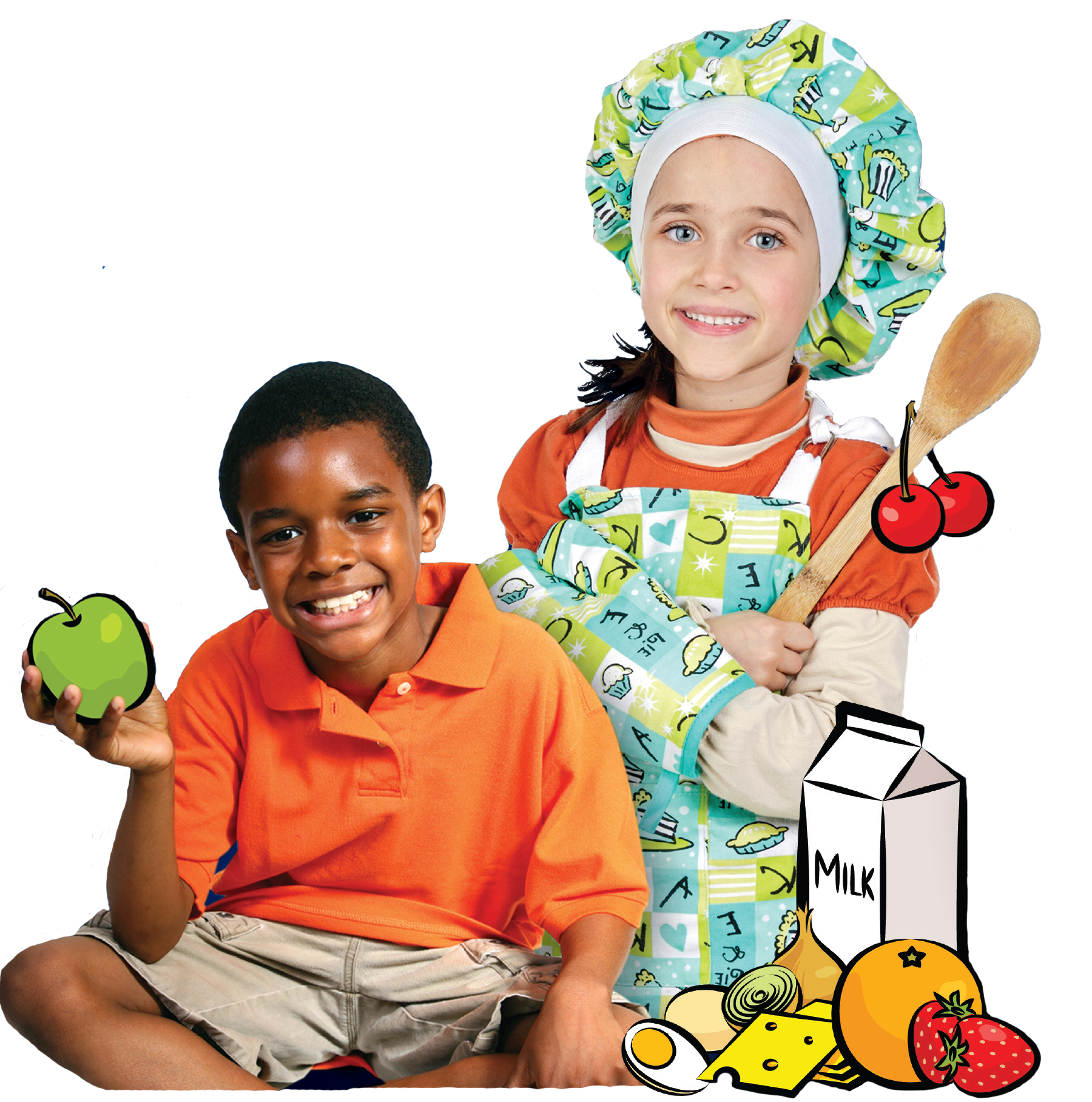
The knowledge and skill development that can be inspired by the FoodMASTER approach is limitless. Proper use of measurement tools, data collection and interpretation, application and generalization, classification and organization, graphing and comparative analysis, understanding chemical changes, observing functions of ingredients and controlling variables, pricing, critical thinking, self-directing learning, and team building are only a few of the potential knowledge and skill development areas for intermediate grade students experiencing FoodMASTER’s scientific inquiry labs.
Additional FoodMASTER lessons can be found to cover health and nutrition topics such as: Food Safety, Vegetables, Milk and Cheese, Meat, Poultry, and Fish, Eggs, Fats and Oils, Grains, Measurement, and Meal Management.
Background for this lesson:
Fruits are sweet plant parts that we eat. There are many different groups of fruit. There are pomes, drupes, berries, melons and citrus fruits. Most Americans do not eat the variety or amount of fruits that they need for healthy living. For this reason, it is important to learn about the nutrition and science of fruits.
In this lesson, students will:
- be able to name five fruits and represent fruits and their parts pictorially;
- complete a fruit facts table and classify fruits into five groups;
- identify environmental changes that can affect browning of fruit and name a kitchen acid;
- Students will be able to describe an example of a chemical reaction and conduct an experiment, record data and draw reasonable conclusions;
- time reactions, name examples of dried fruit, and describe the process of making prunes;
- draw a bar graph, complete a Venn diagram; and
- recognize that advertisers may change the name of food products to make them sound more appealing.
Engage
Students will be learning about fruits in this lesson. Help students increase their background knowledge of fruits by visualizing the types of plants that produce the fruit we eat.
- Print 1 copy of the file, Fruit Interest Approach Pictures. Cut out the individual fruit pictures.
- Place the pictures of the tree, bush, and vine, on the board. Describe each plant to the students and explain that most fruit grows on one of these three types of plants.
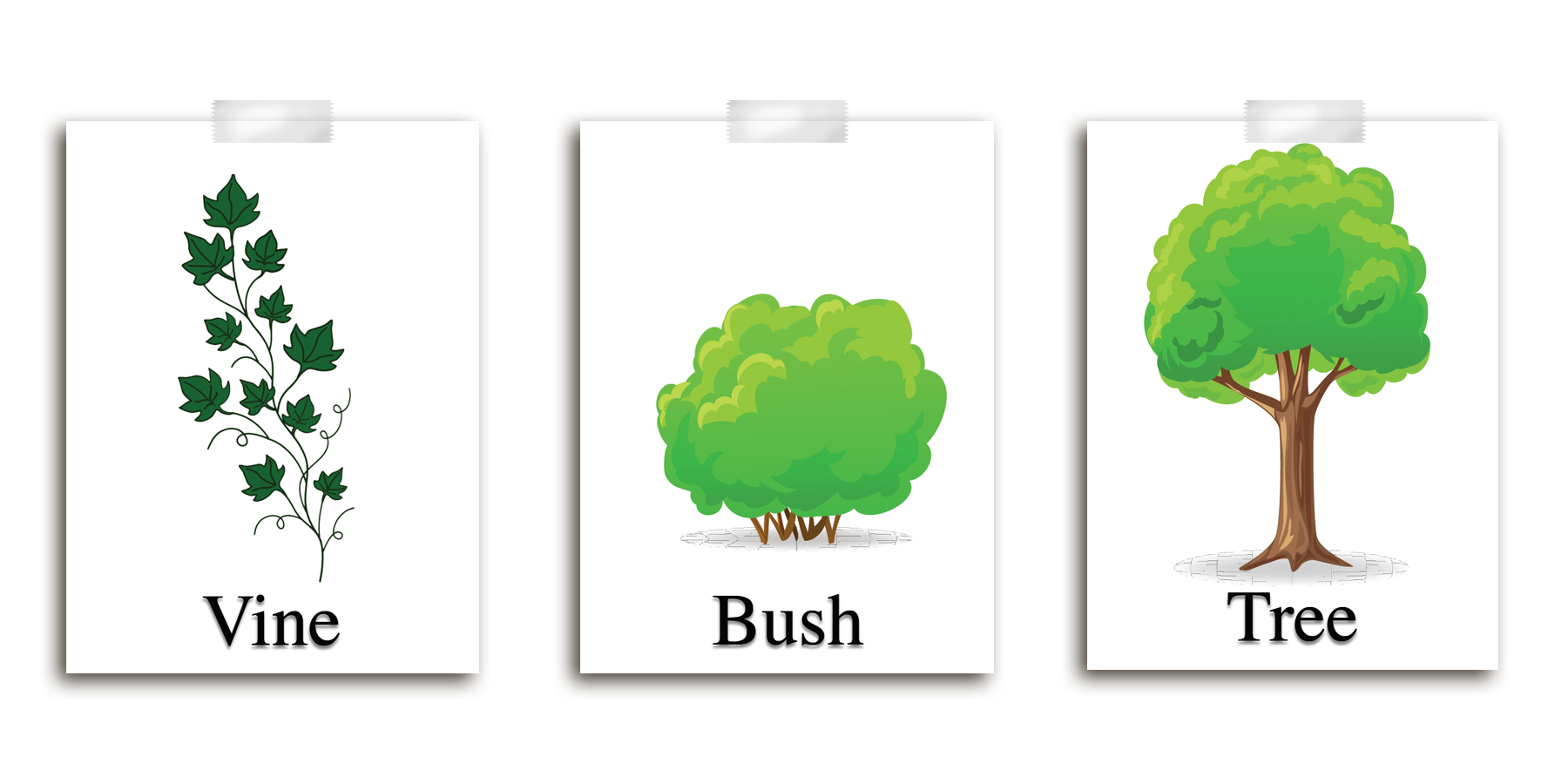
- Tree: Many trees produce various types of fruits and nuts. Fruit trees have a stem and branches made of wood. They produce flowers in the spring, which mature into fruit.
- Bush: A fruit bush is fairly low to the ground. It has small wooden stems that branch out. The bush is covered in leaves and the flowers mature into fruit.
- Vine: Some fruits grow on vines. Vines such as those for grapes or kiwi fruits grow from a woody stem and are usually supported on a trellis. Watermelon and cantaloupe are examples of fruits that grow from vines with a soft, herbaceous stem.
- Choose twelve students in your class and give them a picture of a fruit. Ask each student to place their fruit card on the board by the type of plant that it comes from. You could have the students guess or allow them to research the fruit to find out where it grows.
- Fruits that grow on trees: Lime, grapefruit, orange, apple, pear, cherry, peach, banana.
- Fruits that grow on a bush: Pineapple, raspberry, and blueberry.
- Fruits that grow on a vine: Grape, Strawberry, watermelon, and cantaloupe.
- Summarize that the fruit we eat is grown on a farm. Fruit farms are found in many areas of the United States and the world. California, Florida, and Washington are the top 3 fruit producing states in America.
Explore and Explain
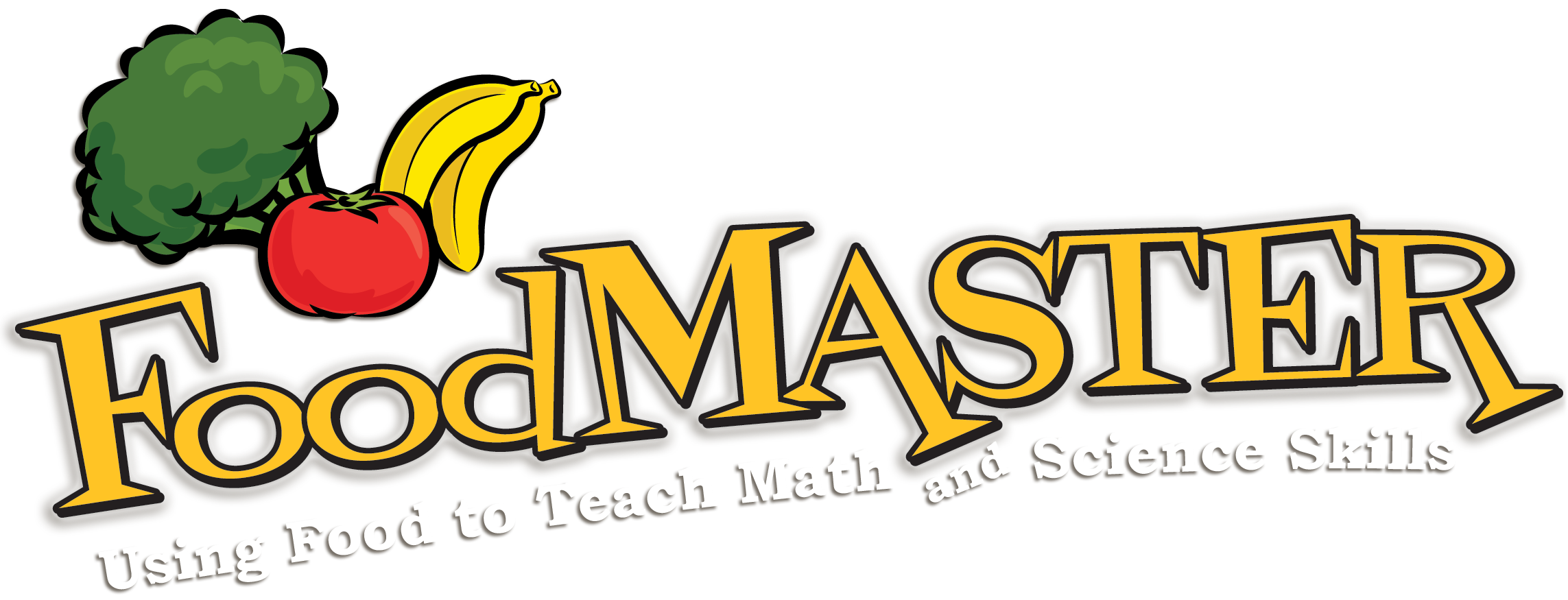
Activity 1: Fruit Groups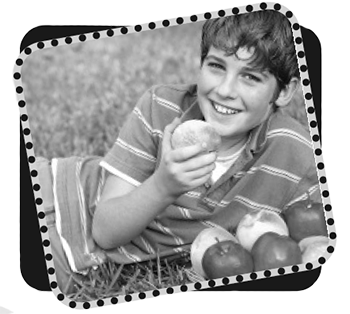
Scientific Inquiry: Pomes, Drupes, Berries, Melons & Citrus Fruit
- Read Fruit Groups and complete the Doodle Bugs.
- Review the different classifications of fruit by answering the matching questions in Scientific Inquiry: Pomes, Drupes, Berries, Melons & Citrus Fruit.
- Divide the class into groups of four.
- Ask one student from each group to use a cafeteria style tray to collect the fruit for their group.
- Students will complete Scientific Inquiry: Pomes, Drupes, Berries, Melons & Citrus Fruit by studying and drawing the inside and outside of each piece of fruit. Using cherry as an example, students will record their findings in the Fruit Facts table. Ask students “Why fruits have rinds and peels?” (for protection) and “Why fruits have seeds?” (for reproduction).
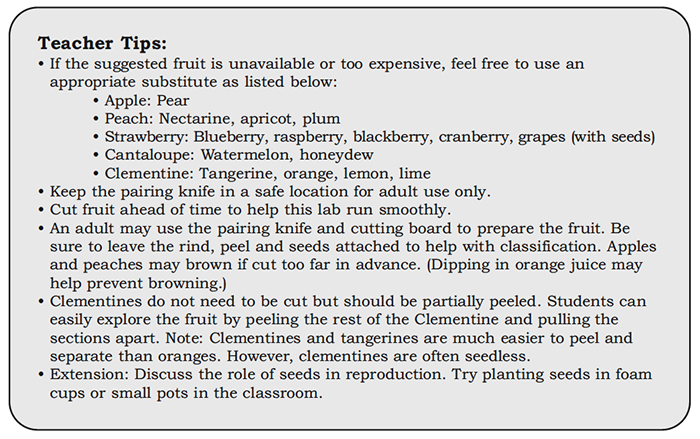
Activity 2: Fruit Reactions
Scientific Inquiry: Browning
- Read Fruit Reactions and complete the Doodle Bugs.
- Divide the class into four groups: A, B, C and D.
- Students will use a cafeteria style tray to collect supplies for their group.
- Each group will perform their experiment. During the lab, ask probing questions “Which group’s bananas do you think will brown the most? The least?”
- While the bananas brown, the class may complete While You Wait: Fruit Salad.
- After 15-20 minutes have passed, student will return to the experiment.
- Give each student a piece of all four bananas. After studying and tasting the bananas, the students will complete the Browning Reactions table.
- Complete the activity with a class discussion: “Why did the lemon juice keep the bananas from browning? Do you think sugar or cream of tartar is an acid? Did any of the additional ingredients change the taste? How?”
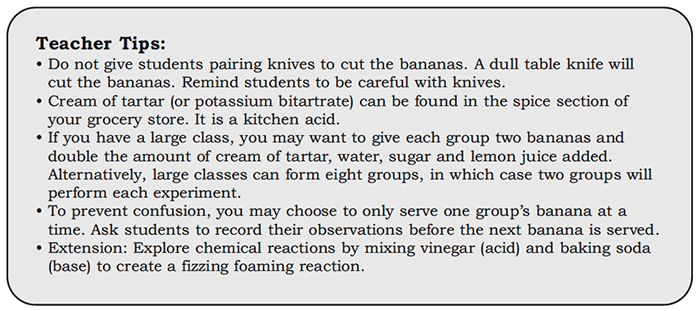
While You Wait: Fruit Salad
- While waiting for the bananas to brown, the class will make fruit salad.
- Read the introduction and directions.
- Complete While You Wait: Fruit Salad as a class. Allow students to assist with preparation of fruit, adding fruit to the bowl, measuring, stirring and serving the fruit salad.
- Give each student a spoon and a small bowl of fruit salad.
- Allow students to taste the fruit. Ask students to note the color of the fruit. “Did the apple, banana or clementines brown? What kept the fruit from browning? Do you think adding orange juice, lemon juice or lime juice to fruit salad would keep the fruit from browning?”

Activity 3: Perfect Prune
Scientific Inquiry: Plump Plums and Pit-less Prunes
- Read Perfect Prunes and complete the Doodle Bugs.
- Place one prune and one piece of plum on each student’s plate. After tasting and studying the fruit, students will complete the Venn diagram and questions.
- Next, your students will create a Human Graph. Use masking tape to create horizontal and vertical axis lines on the floor. Place the three signs along the horizontal axis.
- Ask students to line up behind their favorite prune name or the “Not Sure” sign.
- Ask students to visually compare the human bars. “Which name is the class’s favorite? Least favorite?”
- Instruct students to count the actual number of students in each line. Ask students “What units are used in this graph?” (People.)
Assist students in translating the human graph to the Students’ Favorite Name for Prunes paper graph. 
Elaborate
-
Farmer's Market Tour: Arrange a tour of your community's farmers' market in the fall or spring to observe the variety of food items farmers have produced. Assign students to talk with the farmers to learn more about what they do. If a real tour is not possible, have students do a virtual tour online or invite one or more local farmers to talk about their role and the work they do in your community.
-
Just Saucy: Complete the math enrichment activity. Students apply math skills to learn how applesauce is made.
Evaluate
After conducting these activities, review and summarize the following key concepts:
- Most fruit is grown on a vine, bush, or tree.
- Fruits are classified as a pome, drupe, berry, melon, or citrus.
- Fruits are part of a healthy diet. They provide fiber and various vitamins.
Acknowledgements
- Created by: FoodMASTER- Food, Math, and Science Teaching Enhancement Resource
- Sponsored by: SEPA- Science Education Partnership Award
- Partnered with: Ohio University and East Carolina University
- Graphics provided by FoodMASTER
Recommended Companion Resources
- A Fruit is a Suitcase for Seeds
- A Seedy Fruit Challenge
- An Apple Tree Through the Year
- An Orange in January
- Apples
- Berry Song
- Blueberries for Sal
- Farmers Market
- Food Group Puzzle
- Fresh-Picked Poetry: A Day at the Farmers' Market
- Fruit Bowl
- Kids' Lab Activity Book
- Look Inside Food
- Rah, Rah, Radishes!: A Vegetable Chant
- Spring is for Strawberries
- The Apple Orchard Riddle
- The First Strawberries: A Cherokee Story
- The Fruits We Eat
- The Science of Cooking
- The Very Oldest Pear Tree
- Tree Fruits Flowchart
- What is a Fruit? What is a Vegetable? Bulletin Boards
- When Grandma Gives You a Lemon Tree
Author
FoodMASTER
Organization
FoodMASTER
| We welcome your feedback! If you have a question about this lesson or would like to report a broken link, please send us an email. If you have used this lesson and are willing to share your experience, we will provide you with a coupon code for 10% off your next purchase at AgClassroomStore. |
